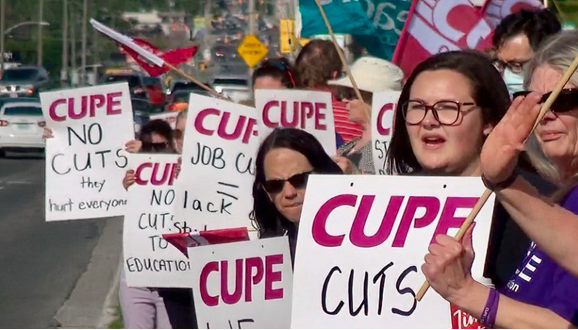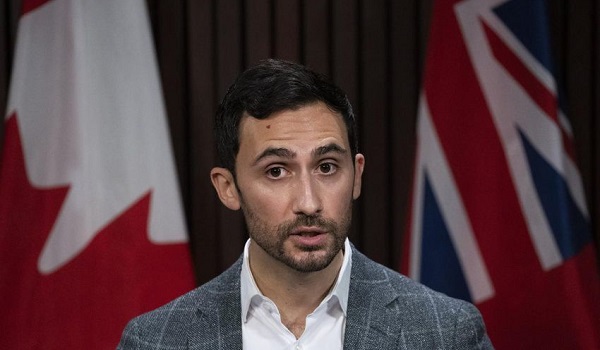He survived being shot by unknown gun men, but the case torn apart as a result of Toronto police ‘incompetence’
Kevin Kusi remembers going up to the elevator of his building in the early hours of March 13, 2020, after getting home from work, pressing the button and then hearing a voice.
“So you guys think we’re pussies?” he recalls hearing. There were suddenly two men next to him. “I looked back and pretty much said ‘I don’t know who you guys are.’”
But then he saw one of them had a gun. He ran.
A judge would later describe it as a miracle that Kusi is still alive after being shot multiple times in his building lobby near Jane and Falstaff avenues in a crime for which a motive was never established.
The then-28-year-old spent months in the hospital, followed by a rehabilitation centre, at the beginning of the COVID-19 pandemic. On top of the injuries and subsequent surgeries, Kusi would also catch COVID-19 in hospital and had to be placed on a respirator. Doctors also feared he might end up with heart failure.
“I almost died twice because of these guys,” Kusi told the Star in a recent interview.
Fast forward three years later, and no one has been held accountable for what happened to Kusi that night, despite arrests. One of the alleged shooters, Ismail Aden, saw his attempted murder charge tossed by a judge earlier this year due to delay caused by Toronto police failing to promptly disclose evidence.
It was the fourth firearms case — and the most serious — to be tossed in just two months due to Toronto police conduct, leaving victims like Kusi with a sense of hopelessness.
A different judge would declare several months later, in a ruling in which he acquitted the alleged getaway driver, that the evidence against Aden was “strong” and “reliable” — “based on the whole of the evidence, I am satisfied that Mr. Aden was one of the shooters,” he wrote.
But the finding had no bearing on Aden’s case since it had already been tossed before getting to the trial stage, where Aden could have tested the evidence against him. His lawyer told the Star her client “steadfastly” maintains his innocence, pointing out he was not a party to the case against the alleged driver.
“Had the allegations against Mr. Aden proceeded to trial, the court would have heard additional evidence, including evidence of an alternate suspect, and had the benefit of advocacy on Mr. Aden’s behalf,” Ashley Dresser said in an email.
Another alleged shooter, as well as another suspect who was there that night, have never been apprehended.
What has exacerbated Kusi’s frustration is that Toronto police won’t tell him what punishment they imposed on the officer who was in charge for much of the Aden case. Kusi knows the officer was disciplined following a complaint from the Crown’s office, but has been given few details.
Kusi, who still has bullet fragments inside his body and will likely have lifelong physical challenges, is left with a lingering question: Where’s justice?
“How can a judge sit there and type how many times I got shot, and see all the evidence in front of them, and say ‘well, it’s not enough,’ or ‘(Aden) has a right to have his trial dealt with a lot faster?’” Kusi said.
The police have told him that the officer-in-charge, Det. Const. Andrea Chalmers, admitted to wrongdoing and received a “substantial punishment,” but they say they’re prohibited by law from saying what it is.
“Whatever punishment she got, if it was sufficient, you guys would have told me straight up,” he said.
“I’m just trying to push for more transparency, for them to really say what happened.”
Attempted murder case tossed due to delay
The Aden case was thrown out in January by Superior Court Justice Andras Schreck, who ruled that the failures to make timely disclosure of evidence “are largely unexplained and unjustified and appear to be the fault of one or more police officers involved in the investigation.”
The Supreme Court of Canada has said that cases in Superior Court must be completed within 30 months, otherwise they must be tossed for violating an accused person’s constitutional right to a trial within a reasonable time unless the Crown can show there were exceptional circumstances for the delay.
Schreck noted that Aden’s first trial date in 2021 had to be adjourned because — for reasons never explained — police only disclosed a cellphone extraction just weeks prior, despite having been in possession of the extraction for almost six months.
As the officer-in-charge, it was Chalmers’ duty to ensure evidence was turned over to the Crown in a timely fashion, so that the prosecution could then disclose it to the defence. The Crown’s office complained to Toronto police, who wrote to Kusi last month with the results of their internal probe.
“DC Chalmers admitted wrongdoing and ultimately ‘misconduct’ under the Police Services Act was substantiated against her,” Det. Sgt. Marc Cioffi of the professional standards unit told Kusi in an email.
“DC Chalmers received a substantial punishment for her actions. Although I am not able to detail the exact punishment for this incident, I can advise you that it is the most severe non-criminal punishment I have ever been involved with.”
Toronto police spokesperson Stephanie Sayer told the Star that the force is prohibited by the Police Services Act from releasing details about investigations stemming from conduct complaints unless the matter is heard by a formal disciplinary tribunal.
“Officer Chalmers has not appeared before the tribunal,” Sayer said.
Penalties for misconduct dealt with at the unit level can include forfeiture of pay, a reprimand, or additional training. Sayer said the decision to send a case to a tribunal hearing is based on a number of factors, including seriousness of the misconduct, whether there’s a history of similar misconduct, and where abuse of authority is an issue.
Kusi wrote back to Cioffi, demanding more information. “Dealing with the incompetence of the TPS has been three years of stress,” he wrote.
He said he did not receive a response.
Reached by the Star, Toronto police said Chalmers won’t be commenting.
‘Strong reliable evidence’
A few months after Schreck’s ruling, Superior Court Justice Shaun Nakatsuru found alleged driver Kaynadid Abshir not guilty of attempted murder and firearm charges.
He wrote that Kusi “was shot at about 28 times” and struck five or six times. “Mr. Kusi crawled away, managed to get back on his feet and then ran down the hallway away from the shooters. He escaped. And miraculously survived.”
Surveillance footage showed two individuals emerging from a car moments after Kusi returned home in an Uber, opening fire on him in the building lobby almost instantly, Nakatsuru said. The footage did not, however, show the driver of the vehicle.
While it was the Crown’s theory that Abshir was involved in the planning of the shooting, the evidence against him was circumstantial and in the end not enough to prove guilt, Nakatsuru found.
The judge did, however, conclude that Aden was one of the shooters based on evidence that included the extracted phone data that was disclosed too late by Toronto police in Aden’s actual criminal case but became part of the case against Abshir. Extracted Snapchat messages were “tantamount to an admission by Mr. Aden that he was one of the shooters,” Nakatsuru wrote.
The messages sent in a group chat on March 13, 2020, included, “dumped 31,” “he’s a goner,” “free dat staff boy” — which Nakatsuru said can be interpreted as a reference to Falstaff — and “run him down in da lobby how I be movinnn.”
A day after the shooting, police also found Aden in possession of a firearm, which testing linked to casings found at the scene.
“Both the extracted data and the forensic casings match are strong reliable evidence for the Crown,” Nakatsuru wrote.
It’s all too maddening for Kusi, who is left to wonder why he was even shot in the first place.
“Like, what the hell did I do?” he said.
He’s since done his own research, going down social media rabbit holes, wondering if he was caught in the crossfire of online feuds that spilled over into real life. The complex where he was shot has been the location of several shootings in recent years.
“As a victim, I should be focusing on healing and getting better, not investigating, not doing the cops’ jobs for them,” he said.
The bullets would only prove to be the beginning of his health-related nightmares. Within months of his admission to hospital, Kusi caught COVID-19 in the early, chaotic days of the pandemic. He had to be taken to another hospital to be put on a respirator, which required him to be placed in a medically induced coma.
Then at the rehab centre a few months later, Kusi started experiencing swelling in his right leg, and his heart rate would go “through the roof” after just a few steps. Doctors discovered a blockage that was preventing proper blood circulation and placed a stent in his right leg after becoming concerned he might suffer heart failure.
He was released in August 2020 after nearly six months in hospital and rehab.
Now 31 years old, he’s doing much better but still doesn’t have full a range of motion in his leg or his left arm. And he’ll likely have bullet fragments close to his heart, lungs and spine for life.
“The legal system is not 100 per cent straightforward most of the time but, in my opinion, this is a very straightforward case that became not straightforward,” he said.
No one has been convicted for the ordeal Kusi had to go through and it’s quite possible no one ever will. “Pretty much, the people who harmed me have more rights than I do,” he said.
He feels the message being sent to him as a result of the justice system’s failure is: “Well, your life is a consolation prize.”
This article was reported by The Star














